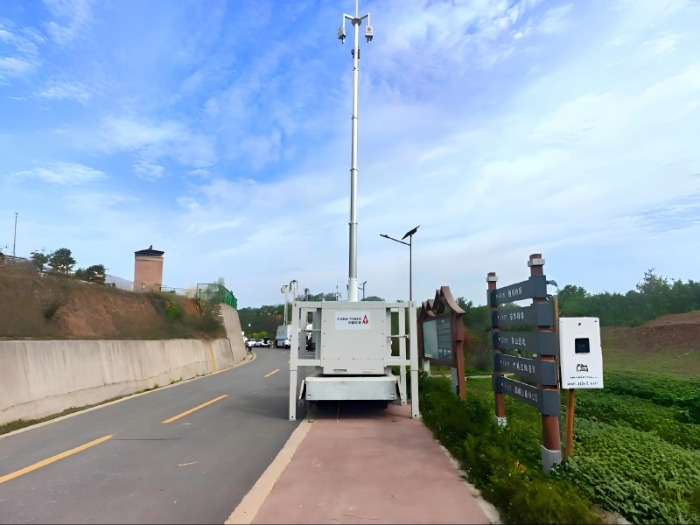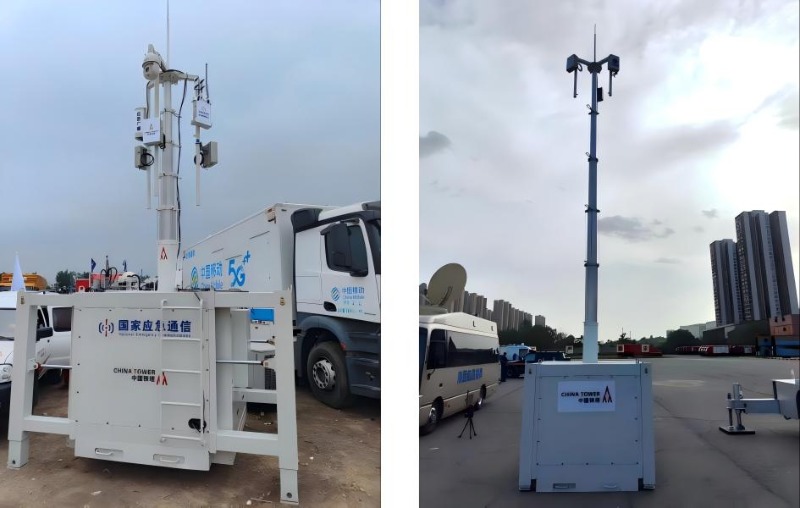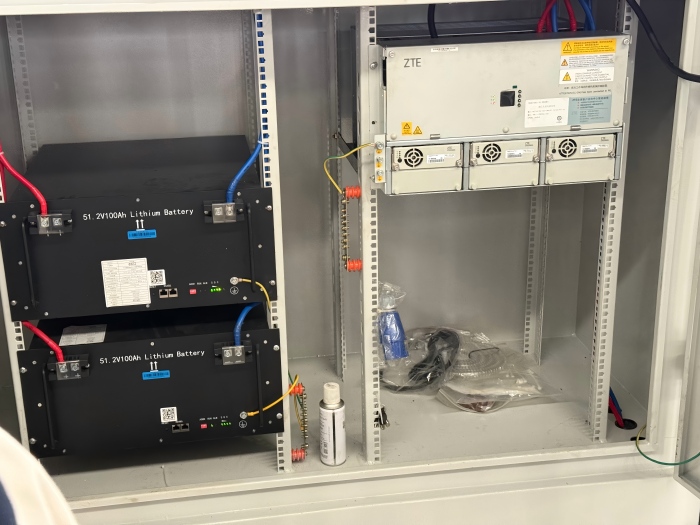In today's fast-paced telecommunications landscape, the ability to rapidly deploy network infrastructure has become a critical competitive advantage. The Emergency Base Station Cabin – an innovative solution developed through collaboration between Shanghai Tongji University Architectural Design Institute, and manufactured by Qingdao Altai Tower Co., Ltd. – represents a breakthrough in emergency communications and rapid network deployment technology.
The Emergency Base Station Cabin is engineered with precision to meet the demanding requirements of modern telecommunications:
Height Range: 8-15 meters, adaptable to various coverage needs
Wind Resistance: 0.35-0.55 kN/m², ensuring stability in challenging weather conditions
Antenna Capacity: 3 pairs of poles, each 1.5 meters long, supporting 3 antennas including RRUs
Compact Footprint: Minimal ground requirement of only 2.6 m² (1.6m×1.6m)
Rapid Deployment: Remarkable 30-minute setup time from arrival to operational status
The cabin's customizable antenna loading system represents one of its most significant technical advantages. The platform can be configured to support various combinations of communication antennas, surveillance equipment, microwave systems, and Remote Radio Units (RRUs), providing exceptional flexibility for different operational requirements.
What sets this solution apart is its unprecedented deployment speed. The integrated self-loading and unloading system enables the cabin to be operational within 30 minutes of arrival at the site. This remarkable efficiency is achieved through:
Hydraulic lifting system with both wireless remote control and manual operation capabilities
Pre-integrated components including switching power supply and backup power systems
Intelligent temperature control ensuring equipment operates within optimal parameters
Modular design allowing pre-installation and testing before deployment

The technology's maturity is demonstrated through several successful deployments across China:
1. Nanjing "Bone Site" Resolution
At the Vienna International Hotel in Nanjing, a longstanding "bone site" – a location where traditional tower construction faced years of obstacles – was finally resolved using the mobile emergency base station cabin. The solution enabled complete equipment installation and testing BEFORE arriving on-site, with elevation deployment completed within one hour after arrival. This approach dramatically reduced on-site work time and minimized community disruption, successfully enabling base station activation where previous attempts had failed for years.
2. Xi'an Tourist Destination Enhancement
During peak tourist season at Huaqing Pool scenic area in Xi'an, the emergency cabin achieved "10-minute emergency cabin deployment and 2-hour base station operational readiness." This rapid response capability allowed the historic site to handle dramatically increased visitor capacity while providing enhanced communication experiences through 5G technology, seamlessly blending modern telecommunications with cultural heritage preservation.
3. Smart Mining Applications
In mining operations requiring 5G IoT coverage, the mobile hydraulic tower's rapid construction and relocation flexibility have proven ideal for smart mining areas. The solution eliminates the high operational costs associated with frequent relocations of traditional infrastructure while providing the high-standard integrated circuit and intelligent manufacturing capabilities required for modern mining operations.

The Emergency Base Station Cabin has gained international recognition, with deployments across multiple continents:
Europe: Cyprus, Italy, Spain
Asia-Pacific: Fiji, Maldives, UAE, New Zealand, Polynesia, Tonga
Africa: Kenya, South Africa
Middle East: Saudi Arabia, Lebanon
These international projects, serving major operators including Vodafone, TIM, Orange, Airtel, Etisalat, STC, and others, validate the technology's reliability across diverse environments and operational requirements.
The Emergency Base Station Cabin delivers significant economic benefits:
Reduced Capital Investment: The reusable design enables multiple deployments with minimal additional investment
Lower Operational Costs: Rapid deployment reduces labor costs and network downtime
Flexible Deployment: "Use minimal investment to meet urgent, repeated requirements" – as demonstrated in the Chinese applications
Minimal Site Preparation: The compact design requires virtually no civil works, further reducing costs

The technology has already gained visibility through participation in major industry events, including the Yangtze River Delta Emergency Communications Exhibitions and the 2025 World Mobile Congress (MWC Shanghai). These platforms have demonstrated the solution's capability to set new standards in emergency response and rapid network deployment.
The Emergency Base Station Cabin represents a paradigm shift in telecommunications infrastructure deployment. By combining rapid deployment capabilities, technical reliability, and cost-effectiveness, it addresses critical challenges in both emergency communications and routine network expansion. The proven success in diverse applications – from resolving longstanding "bone sites" to supporting tourist destinations and industrial applications – demonstrates the technology's maturity and versatility.
As network operators worldwide face increasing pressure to expand coverage quickly and cost-effectively, solutions like the Emergency Base Station Cabin offer a compelling alternative to traditional infrastructure approaches. With its 30-minute deployment capability, customizable antenna configurations, and growing global track record, this innovation is poised to play an increasingly important role in the future of telecommunications infrastructure.
Click here to learn more about the product.